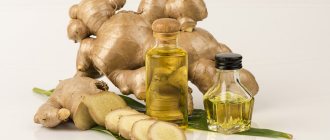Flaxseed oil is a colorless or yellowish oily liquid obtained from ripened and dried flax seeds. It is in demand for food because it has a high level of Omega-3 fatty acids and many other substances necessary for humans. Many doubts arise among those who want to start taking flaxseed oil. The beneficial properties, benefits and harms that you hear about are so contradictory that it is a little difficult to understand them. Looking ahead, we should immediately say that you need to use this product with great caution so as not to harm your health. Before starting such treatment, you should always consult a specialist.
What is flaxseed oil?
The oil is obtained by pressing dried flax seeds. It has a range of applications, from furniture finishing to oil painting. It is added to paint, inks, varnishes and resins, since such manipulations help surfaces treated with oil dry quickly. Treating wood with linseed oil gives it a more finished, well-maintained appearance and provides a rich, luminous finish. There are many other uses for this substance, so not all flaxseed oil can be used as a dietary supplement or for treatment.
There are raw (cold pressed) and “cooked” (hot pressed) oils. The former is most often used as a dietary supplement because in its raw form it retains all the nutritional value. It has a pale golden color and is odorless and tasteless. The situation is completely different with hot-pressed oil, or drying oil. When processed thermally, it has a darker color and a characteristic pungent odor; it is unsafe to eat it and can be seriously harmful to health.
How to choose good flaxseed oil?
I’ll say right away that you need to know how to choose a good oil. Just going to the store and buying the first thing you come across is stupid and extremely reckless. In most cases, you will get harm from such a product, not benefit.
Because I have already bought it dozens of times, I have decent experience in this matter, I will tell you the subtleties of choosing it. So, here are step-by-step instructions for choosing how I do it.
Container into which the product is poured
When I buy linseed oil, or any oil in general, first of all I pay attention to the container in which it is poured. I won’t even go near the oil poured into a light plastic bottle.
Guys, this is absolutely disgusting! What does a manufacturer think when he pours a product into plastic, especially transparent plastic? PET reacts with the light fats of flaxseed oil, forming harmful compounds. But that's not all! In such containers, additionally, under the influence of sunlight and air, the oil oxidizes, becoming unhealthy.
Therefore, I recommend always buying flaxseed oil in glass containers. If it is a transparent bottle, then it should have a cardboard box on the outside so that sunlight does not fall on it. Sometimes found in a dark glass bottle - this is also a good option.
Is it cold pressed?
Manufacturers often make products using cold-press technology. You can write whatever you want on the label and there is no way to check it. For example, that it is pressed at 42C, but in fact the press can heat up to 85C! This is done to increase the yield of the product. Will this be useful? NO!
Flax oil should not be heated; it produces harmful carcinogens. Squeezed in this way refers to products that are not raw food, but are still consumed by “raw foodists.”
Dilution with cheap oils
Cheap flaxseed oil usually costs pennies because it is not 100% flax seed. Cunning manufacturers dilute it with another oil, most often corn or rapeseed, to hide the effects of excessive heat when squeezing out flaxseed oil.
In addition, such a product is often poured into dark plastic bottles of 0.5 and 1 liter so that the buyer cannot immediately understand what is what.
Correct shelf life
Look at the date of manufacture and expiration date. Flaxseed oil can be stored for 6-9 months in a very airtight bottle and in completely dark packaging.
If the bottle indicates a shelf life of 18 months, it is chemical. I’m already silent that some manufacturers can store it for 2 years. Just tough! What are they pouring in there?
Taste and smell of the product
Good flax seed oil always has a slightly noticeable bitterness (but not bitterness) and a faint aftertaste of fish oil, but does not have a fishy odor. These factors indicate the normal, unoxidized state of Omega-3 fatty acid, which, as you already know, is very abundant in flaxseed oil.
Know that bad flaxseed oil will never have that taste. Often cheap oil does not have a distinct taste or smell, which is abnormal and indicates its low quality.
I note that if it even has a slight taste of roasted seeds, it means it was not made by cold pressing, but by industrial extraction (to reduce the cost of production).
Correct container volume
No need to take 1 liter in large containers. This impairs its storage capabilities. The fact is that after uncorking the container, it is stored for a maximum of 3 months, and then it usually goes rancid and can no longer be eaten.
If you use flaxseed oil alone, take it in small bottles of 0.2 l or 0.35 l, they are usually made of glass.
Color and sediment at the bottom
High-quality flax seed oil has a brown-golden color and a light sediment at the bottom of the bottle.
If the color is light and there is no sediment, we are dealing with a refined product, which is not always healthy. Refining is often carried out using edible gasoline. We don't need such a surrogate.
If the product has a pronounced orange tint, it means it is not cold-pressed, but a hot press was used when squeezing it out. It practically no longer contains beneficial Omega-3 fatty acids, but only carcinogens.
These are my recommendations for choosing a good flaxseed oil. If you have anything to add or ask, write in the comments. And now I will tell you where and how to buy a quality product.
Oil properties
Flaxseed oil is a popular remedy used for both food and healing. It contains alpha-linolenic acid (ALA), Omega-3 fatty acids, which are important for maintaining human health and preventing many diseases. Oily sea fish has similar properties, but, unfortunately, not everyone eats it, and the required amount of microelements can be replenished by eating unrefined, cold-pressed flaxseed oil.
For women, flaxseed oil is recommended not only for the treatment of certain diseases, but also for improving well-being, skin condition, nails, hair, and more. It consists of lignans, which are also considered plant estrogen. The therapeutic effect of flaxseed oil on the body is to establish a hormonal balance, prevent metastasis of estrogen-related tumors, improve conditions for various symptoms of inflammatory diseases, and so on.
Flaxseed oil should be a reference
The “gold standard” for flax oil is a pleasant soft taste, reminiscent of a nut, with sweet-tart notes. It shouldn't be bitter. Golden or caramel - that's what color it is. An unobtrusive aroma of hay should ideally accompany the tasting; some note a slight fishy smell. If there is no taste or smell, then most likely you are looking at a refined, processed product instead of a raw and unrefined one.
Let's say you checked what flaxseed oil looks like, tastes and smells. What else should you pay attention to? It should be as fresh as possible, since the shelf life is short, only two months. For the same reason, you should not take a large bottle. Even with daily consumption, a 250 g package will be enough for your family needs, but you won’t be able to stock up for future use due to rapid rancidity and oxidation (compared to other vegetable oils). In general, nutritionists recommend consuming 40 g of oil per day for a healthy adult to cover the daily requirement for fatty acids.
Make sure that the flaxseed oil is cold pressed - this is the optimal technology for preserving all the beneficial substances in the composition, because at the exit from the press the temperature of the mass does not exceed 43⁰C. Refined and extracted oil is suitable only for technical purposes and is not used for food. And do not forget about such a characteristic as the correct container. It is good if the manufacturer immediately places the product in a darkened glass bottle with a tight lid.
The benefits of flaxseed oil for the female body
The benefits of flaxseed oil for women are obvious. Since women after menopause are prone to developing many different diseases, they urgently need to eat this valuable product. It can be added to salads, side dishes, taken pure or in the form of medications, such as capsules. If a woman over 30 years old makes it a rule to eat flaxseed oil every day, she will be able to prevent various diseases of a hormonal nature, the cardiovascular system, the musculoskeletal system, and improve the condition of her skin and complexion.
Olive oil
Olive oil
Olive oil is familiar to us in cooking - we season salads with it, make sauces and marinades based on it, bake muffins and bread with it. Olive oil performs many essential functions.
- Normalizes the functioning of the cardiovascular system.
- Stabilizes blood pressure, lowers the level of “bad” cholesterol, and stops inflammatory processes in the body.
- Thanks to the high concentration of vitamin E, it slows down the aging process, gives skin and hair radiance and shine.
- Due to the content of valuable fatty acids, it helps to establish a woman’s cycle and restore hormonal balance.
- It has a gentle laxative property, coats the contents of the stomach and intestines, improving digestion and helping with constipation.
- It contains squalene, which maintains an optimal level of moisture in the skin.
Use of oil for women's diseases
Essential fatty acids for the body, which are contained in large quantities in flaxseed oil, help minimize the risk of breast cancer in women. In addition, it is often used to treat female genital diseases, premenstrual syndrome, endometrial hyperplasia and endometriosis, ovarian cysts, menstrual pain, premenopausal symptoms, and female infertility. If a woman starts taking this remedy, then within a month she will notice a normalization of the menstrual cycle and an improvement in uterine function. The level of progesterone in the body will be balanced. In addition, headaches, mood swings, sleep disturbances, anxiety, etc. disappear.
The benefit of flaxseed oil for women is to prevent the production of prostaglandins. They can cause heavy menstrual bleeding if released into the body in excess. Phytoestrogens contained in flax seed oil are involved in stabilizing the levels of estrogen and progesterone, which, in turn, has a beneficial effect on hot flashes during menopause. The healing substance is also an excellent dietary supplement for women who suffer from osteoporosis. Omega-3 fatty acids can improve the body's absorption of calcium and thus reduce the risk of calcium deficiency.
Flaxseed oil during pregnancy
During pregnancy, the optimal daily dose of flaxseed oil is 1 - 2 tbsp. l. The natural product eliminates constipation in the expectant mother and improves vision.
The benefit for the child is that the oil stimulates the formation of the brain. But before childbirth, the drug cannot be used uncontrollably, because it increases intestinal activity and provokes premature birth.
If the gynecologist does not object to the use of flaxseed oil, a pregnant woman can add it a little to salads and cereals. The product will make the uterus more elastic and facilitate the opening of the cervix before childbirth.
For stretch marks, flax oil can be used without fear. Daily rubbing of the product into the skin will smooth out wrinkles and increase elasticity.
Heredity, modern ecology and lifestyle often prevent the female body from developing and “blossoming”. Many problems in gynecology are associated with hormonal changes, pregnancy, age-related menopause and a number of other reasons. Medicines for the treatment of women's diseases have filled the shelves of pharmacies, but folk remedies can also be used to help them. Seed or flaxseed oil for uterine fibroids, endometriosis, low estrogen and candidiasis can significantly increase the body's defenses, so the disease recedes soon.
Using flaxseed oil for weight loss
Many women use flaxseed oil for weight loss. Reviews about the benefits, how to use it for medicinal purposes and other information can often be heard from friends, but it is best to seek advice from a nutritionist. He will talk about the benefits of losing weight in this way and warn against negative aspects. The benefits of flaxseed oil for weight loss are quite great. Nutritionists often recommend their patients use it as a dietary supplement to combat excess weight. Plus, replacing saturated fats and trans fats with healthy ingredients can provide additional health benefits. However, if you decide to use flaxseed oil for weight loss, the use, benefits, contraindications and dosage should be discussed with your doctor in advance.
Oil saturated with fatty acids will provide the necessary energy, vitamins and beneficial microelements, and reduce the risk of developing high cholesterol and heart disease. The benefits of flaxseed oil for weight loss are to effectively help women achieve their desired results. A small amount of it per day is enough for a person to painlessly control the amount of calories consumed and digest the food eaten without depositing “reserves” on the sides. Women who have reduced their daily calorie intake to 1,200 units should consume up to 4 teaspoons of oil per day.
Harm from using flaxseed oil
Of course, there is some harm to the body from using this substance. The harm and benefits of flaxseed oil on an empty stomach are especially obvious. It contains soluble fibers that can cause diarrhea, cramps, bloating and flatulence. If you take flaxseed without enough fluid, you may experience constipation or intestinal obstruction. Therefore, during treatment, the harm and benefits of flaxseed oil on an empty stomach should be assessed, and adjustments should be made to the dosage.
Under no circumstances should unripe seeds be used for treatment, as they can be poisonous and cause intoxication of the body. When using any medications together with flaxseed or oil, the latter can block the normal absorption of drugs and affect the effectiveness of painkillers, anti-inflammatory, and hormonal drugs. Therefore, we can say with confidence that if you want to use flaxseed oil, the benefits and properties, use and treatment of diseases should be discussed in detail with your doctor.
The effect of flax on women's health
Flax products are excellent for solving women's problems; their biologically active substances are very similar in structure to female sex hormones. Phytoestrogens in flaxseed oil normalize the general condition of hormonal imbalance, uterine fibroids, make it easier to survive PMS, act as a preventive measure for cancer and are directly involved in the treatment of tumors.
In addition, flax seed is rich in micro- and macroelements such as zinc, phosphorus, magnesium, potassium, calcium, which take care of female beauty, giving hair a healthy shine, nourishing the skin and nails.
Plant estrogen provides phase 1 of the menstrual cycle, creating favorable conditions for ovulation.
Due to plant fibers, flaxseed oil in gynecology cleanses the body of waste and toxins.
How to use flaxseed oil
As already mentioned, flaxseed oil is of enormous importance in the treatment of numerous diseases. But in order for treatment with such a remedy to be beneficial, you should know how to use the substance, in what quantities it can harm the body and how it affects various organs.
Flax seed oil is a source of polyunsaturated fatty acids, the chemicals of which can reduce inflammatory processes. That is why it is actively used to treat rheumatoid arthritis, edema and other inflammatory diseases. In addition, the oil is used by women during menopause and for the prevention of female diseases. For these purposes, four tablespoons per day will be enough; the course of treatment ranges from 6 to 15 months.
For skin diseases, as well as to improve the condition of the skin and nails, lotions and masks should be made with the addition of linseed oil. A few drops of it are added to a regular hand or face cream, and the product is rubbed into the skin and nails with gentle massaging movements. After just a month of regular use, you will be able to notice the first positive results and see for yourself how great the benefits of flaxseed oil are for women. It is recommended to perform therapeutic procedures daily in the evenings, after cleansing the skin.
How to choose and use flaxseed oil correctly
The only place where you can safely buy flaxseed oil is a pharmacy. It is better not to purchase it at retail outlets, as it is easy to run into a fake. Before purchasing, pay attention to the bottle. It is desirable that it be made of dark glass. A product in plastic packaging is potentially dangerous because... fatty acids can interact with plastic and form harmful compounds.
When consuming flaxseed oil, follow several rules:
- Do not use this product for frying. It is used only raw.
- Take flaxseed oil strictly as prescribed if the goal is to prevent or treat diseases.
- If you take oil for weight loss, then drink 1 tsp in the morning and evening. on an empty stomach or half an hour after a meal .
- To improve the condition of your skin and hair, add flaxseed oil to nourishing masks, creams, and lotions .
Don't count on instant results. To get noticeable results in the treatment of diseases or in the process of weight loss, you need to drink flaxseed oil for weeks, or even months. This is a path to slow and gradual improvement in health.
Flaxseed oil in cooking
If you don't like to drink the oil with spoons, you can add it to your food. For example, cottage cheese with flaxseed oil and dried fruits is considered tasty and healthy. To prepare a portion of this delicacy, mix 250 grams of cottage cheese, 1-2 tablespoons of low-fat sour cream, 1-2 tablespoons of flax seed oil and a handful of any dried fruits (raisins, dried apricots, prunes, etc.) in a blender. Beat everything until smooth and eat. By the way, such a dish can be eaten for breakfast or afternoon snack instead of the main course.
Flaxseed oil is added to vegetable salads, side dishes, fish or meat. Fats bind to proteins and allow them to be more easily absorbed by the body.
Flaxseed oil for female diseases: methods of treatment
Candidiasis
To treat and prevent thrush, flax oil is consumed orally in the morning and evening (half an hour before breakfast and dinner). It will take 6–7 days to fight the fungus. To enhance the effect, the oil can be taken in a 2-week course. It is important that your diet is free of sugar and sweets.
Uterine fibroids
Whether flaxseed oil will be effective for uterine fibroids can be understood from the reviews of doctors. Experts write that it is unwise to rely only on herbal remedies. Therapy for such a serious disease must be comprehensive.
It often develops against the background of endocrine disorders if a woman is obese or has diabetes. The composition of flax allows you to improve the functioning of the endocrine system and get rid of benign tumors.
How to take flaxseed oil for uterine fibroids? The daily dosage is 2 – 3 tbsp. l. You need to start with 1 tsp to test the body for intolerance. If there are no side effects, the dose is gradually increased.
If you are worried about PMS, flaxseed oil and honey will help you feel better. The proportions of the components are 1: 3. The mixture relieves pain and spasms and gives energy.
Video:
Ovarian cyst
To resolve a cyst on the ovary, flaxseed oil is taken once a day at a dosage of 30 mg. You can take the drug with green tea (half a cup is enough). Oil and tea regulate the level of male hormones, which are partially present in the body of every woman. As a result, the cyst disappears.
Endometriosis
If a patient is diagnosed with endometriosis, the use of flaxseed oil for her will be as follows:
- For a month, the natural product is combined with taking boron uterus tincture. A flax product is consumed in the morning and at night, 2 tsp., Borovaya uterus - three times a day, 1/3 tsp.
- Infusion of celandine is used to syringe the vagina 2 times a month. The drug is diluted with boiled water 1:1.
- In the mornings and evenings they drink a mixture of beet and carrot juice.
- With the beginning of the second month, they continue to take flaxseed oil, boron uterus and vegetable juices. Prepare a mixture of honey and aloe juice (400 g each) and pour in 0.5 liters of Cahors. The composition is kept in a warm place for exactly 2 weeks. Take 1 dessert spoon before each meal.
- At month 3, treatment is continued, but without douching.
- They take a 7-day break, after which they take only flax and hogweed.










